An in-depth guide to influencer marketing for both businesses and content creators.
Post length: 4,400 words. Pin this post to read it later.
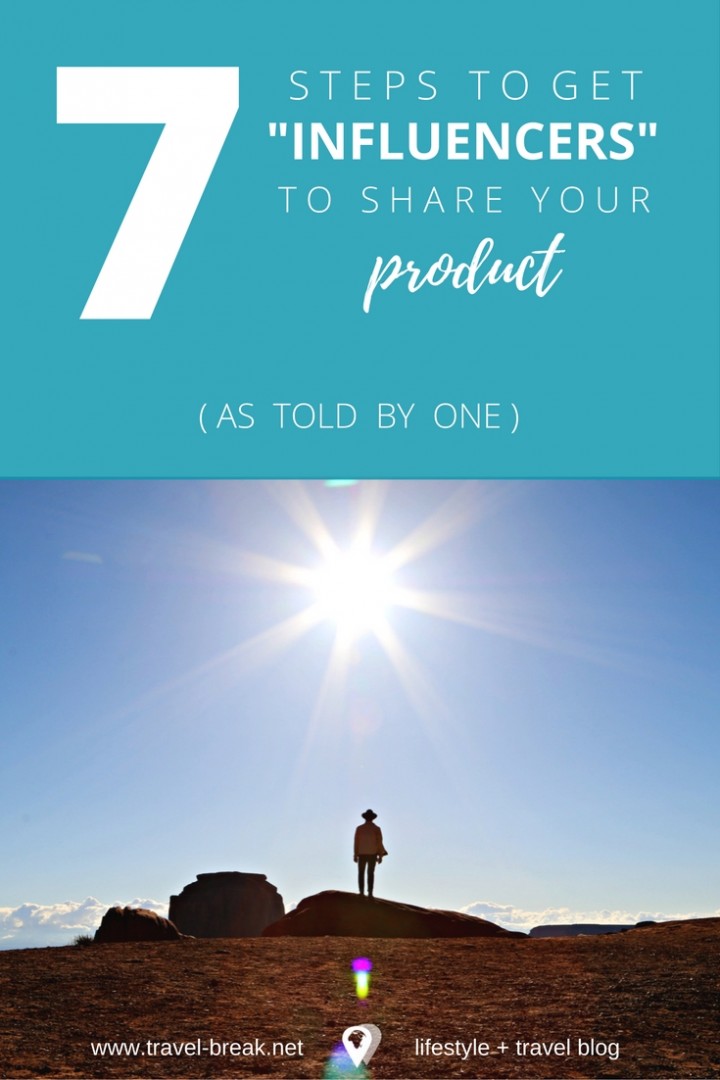 I get it. You love scrolling through Instagram and seeing beautiful photos. You love sneaking a peak at your Facebook timeline to click on that “click-bait” headline. Writers and photographers fill your attention-needs with new information and escapist inspiration. But how do you get these people with all these eye balls to talk about your business? What is influencer marketing? How do you get photographers, personalities and writers to tell people about your new app, restaurant or hotel?
I get it. You love scrolling through Instagram and seeing beautiful photos. You love sneaking a peak at your Facebook timeline to click on that “click-bait” headline. Writers and photographers fill your attention-needs with new information and escapist inspiration. But how do you get these people with all these eye balls to talk about your business? What is influencer marketing? How do you get photographers, personalities and writers to tell people about your new app, restaurant or hotel?
– Cost for a billboard advertisement: $10,000 to $25,000 for four weeks.
– Cost for a one-page print advertisement in Cosmo Magazine: $250,000 to reach 50,000 readers.
– Cost for a PR agency: $5,000 – $10,000 for a startup; $20,000 per month for the average agency; up to $100,000 a week for premium clients.
Cost to reach 100,000 people on Instagram: a pair of socks or swimsuit.
JUST KIDDING.
There are several reasons artists and entertainers don’t work in exchange for product.
This week, we celebrate the 25th anniversary of the internet. We grew into webpages, mobile apps and social media in the short timeline of my own life.
So shouldn’t our advertising budgets mirror our markets’ behavior? People went online and businesses have too. If you want to successfully and ethically promote your product on a blog, Instagram or Youtube, please review the following.
In this post:
- Why use influencer marketing
- Influencer marketing trends
- Influencer marketing strategy
- Types of digital influencers
- Influencer marketing best practices
- The difference between press and social media marketing
- What to pay for digital influencer marketing (Instagram, Blog and Youtube rates)
- What to do without an influencer marketing budget
- How affiliate marketing does and doesn’t work with social media marketing
- The value in micro-influencers
- 7 Step Influencer Marketing Roadmap
We have a lot of ground to cover, so let’s get at it!
Intro: Why Use Influencer Marketing
Definition of Influencer Marketing: focusing on specific types of individuals instead of a market as a whole.
What does this mean? You’ve thought about the wants and needs of individual real people (within your market) and use leaders — real, individual people — to drive your message.
What is the purpose of digital marketing?
- Reach real people within your target market.
- Meet call-to-action goals: app downloads, product sales, drive website traffic, get booked for services etc.
- Build an online community of existing and potential customers through social media, webpages, search engines and e-marketing.
- Establish credibility.
- Provide inspiration and information for your target market.
- Manage customer service.
- Listen to your market to provide better products and services.
Why use online influencer marketing? Successful influencer marketing builds YOU an online community which offers:
- Optimized PR campaigns.
- More affordable advertising than non-digital advertising platforms.
- Higher customer retention rates.
- More conversions and referrals from subscribers.
- Trackable analytics.
Sounds amazing right? Why wouldn’t you invest in digital influencer marketing! Most people do, but many companies do it wrong. SO how do you successfully run an influencer marketing campaign?
1. Know your Target Market
Marketing and advertising aren’t evil. If you’re helping people find the products, services and experiences that they need or would be interested in anyways, marketing and advertising connect people and products that make sense. Please don’t reach out to us (“influencers”) with items irrelevant to our audience; there is someone who is a right fit for your product — reach out to them instead.
With a clear understanding of your target market persona, campaign objectives and story — you can identify the right social media and digital marketing channels for your brand. Influencer marketing is only successful when it’s a natural fit.
Truly “influential” photographers, writers and talent are only going to share something with their audience if it’s an organic match.
Alternatively, you’ll get someone desperate for cash who will stuff your links into a hidden blog post that no one will find — or post a photo on Instagram that they’ll delete the next week. These more “affordable” routes don’t meet your goals.
2. Identify and Create your Own Online Brand
The #1 mistake I see companies make is spending a bunch of time (and money), trying to promote their product and not enough on making their online brand subscribe-able.
As an “influencer,” I don’t want to promote a crappy brand.
As a consumer, I don’t want to follow a crappy brand.
You need to have spectacular content on your platforms to optimize your advertising and PR — and to solve actual problems for your customers.
Is your business a go-to for useful information and/or incredible inspiration? Or are you just something for us to buy on occasion with a “thank you” and “good-bye?”
I’m sorry, but reality is that your photos are probably not very good. Yes, that was bold. But your blog posts are probably not dazzling. Unless you’re working with a professional photographer who has experience in curating content for Instagram, your photos are probably subpar. Unless you’ve hired an SEO smart creative writer, your emails and blog posts are probably a bore.
Would you assign accounting to someone just because they know how to count? Would you book someone for a speaking engagement just because they know how to talk?
Would you give your social media to the intern?
Many marketers and publicists are not photographers. Period. So learn to be one or hire one.
There’s a lot that goes into making your own content “follow-able” and it starts with hiring content creators.
I don’t care how much you pump into PR and advertising, if your online brand (and actual product/service) isn’t interesting, people will hear about your product and forget about it until they hear about it again through PR or advertising.
However, if you online platforms are subscribe-able, people will hear about your product, connect with you and hear about your product every time they hear from you (which has to be more than just promoting your product or service).
Your actual product or service could be AMAZING, but if we can’t see that in a first impression with your online brand, then this will be our behavior:
- *Hears about product.*
- *Goes to check out product.*
- *Leaves without purchasing or downloading product >> potentially forgets about product.*
However, if you have a super incredible product that we’d be likely to use and make a strong first-impression and are useful outside of purchases, our behavior is as follows:
- *Hears about product.*
- *Goes to check out product.*
- *Learns more by checking out your site, downloading your product, asking friends about it, Google-ing it (hey look, you’re right back at online branding).*
- *Might subscribe to you online. If I subscribe to you online, it’s because you inform me, inspire me and provide a relatable space. You become a go-to instead of just a one-time product or service.*
- *Make purchases/ or refer a friend to your product or service when they’re in need.*
By having a purposeful, meaningful, subscribe-able online brand, you create a community. This optimizes your investments in PR and advertising to keep existing customers and reach new people.
Otherwise, you’re spending all of that money on a publicist and advertising space, but people don’t stick.
So what’s your brand? Two influencer marketing examples of very different content styles.
BRAND STYLE: Bright, Lifestyle + Personable
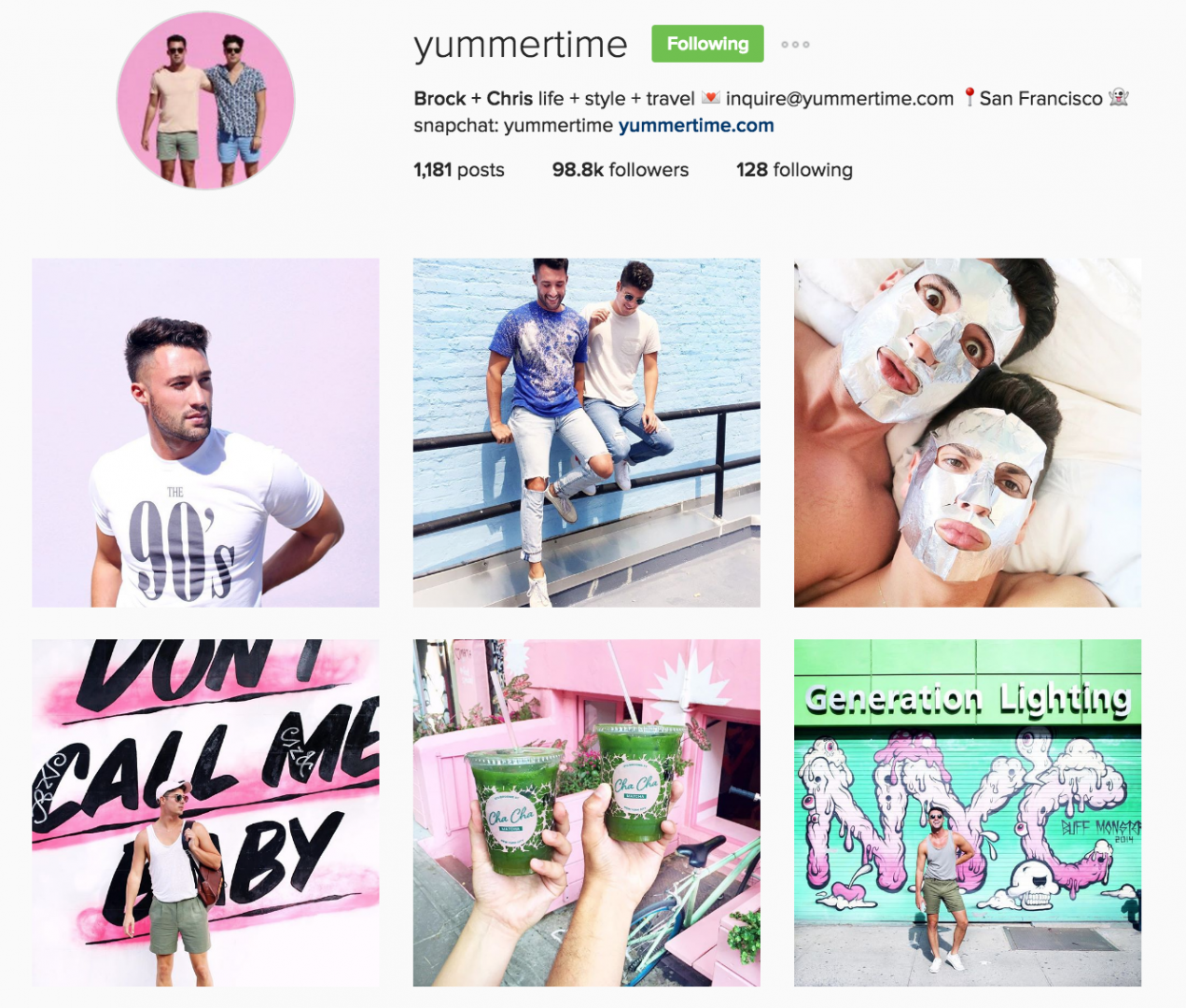
Take Brock and Chris’ personal brand @YummerTime: it uses a lot of white, pinks, green and teals. It’s a lifestyle, fashion and travel brand. Their pictures may be of different places and products, but the content style is consistent.
BRAND STYLE: Dark, Edgy and Creative
Similarly, New York photographer Jose Silva @JNSilva sticks to moody photos — whether sharing a city, park or person. You’ll consistently find night photography and artistic (but dark) color blends.
With a little research you’ll note consistent styles and influencer marketing trends in photography, videos, tone and designs across Instagram, Youtube and blogging.
3. Understand the different types of people that make a campaign effective.
So who makes your influencer marketing campaign successful? A combination of people with different skill sets and talents.
- The people in front of the camera (models and/or someone with a voice – online personalities)
- People behind the camera (photographers, videographers)
- People with a marketing platform (social media platforms, emails, websites)
- Creative directors (influencer marketing agencies, the photographer and or personality)
- Campaign strategist (in-house marketing team or influencer marketing agencies which identify talent, manage budgets and track analytics)
This means that you can have a photographer popular on Instagram, who may not align as a personality with your market. Or you can have a personality that’s popular on instagram that would not produce photos that would be popular on your platform.
Sometimes, you get lucky and you find people that can hold multiple roles. Personally, I get hired as on-camera talent, as a photographer, a writer and social media influencer. Tripods can only do so much, and I typically need to book a model or a photographer to work with me if I’m booked for one role over the other.
You are paying for all of these services every time you run a campaign. Even if you can find one 360 person to provide multiple services, you’re still paying for all of these services.
Here is the key point:
You need someone to shoot professional photos and videos of a person your market identifies with.
What does not work:
- Paying photographers to promote a product that they don’t personally relate to or worse that your market doesn’t relate to.
- Paying models/ personalities, photographers, bloggers and/or hubs to promote your account when your account doesn’t have incredible quality photos and content.
Here’s the next key point:
When someone promotes your account or product, no matter how big their audience is, or how great their photos are — no one will subscribe to YOUR account, if you don’t have great photos and content.
You account has to be subscribe-able.
Do I sound like a broken record on replay yet?
This is where creative directors and strategist come in. It’s their job to understand your company’s brand and objectives. It’s their responsibility to implement and a campaign that makes your audience happy and shape your online brand.
Take for example, my recent partnership with Hilton Hotels. I had the honor of shooting with phenomenal natural landscape and underwater photographer Sean Ensch.
Sean has a darker, grander editing style. Check out his version of our photos:
Sean has technical skills in underwater photography beyond my scope. He is one heck of an underwater photographer! He is a specialist. I can’t shoot the way Sean shoots. However, Sean can’t organize a campaign the way I do. He’s also not a writer or “personality.” We both contribute to the creative direction in unique ways because we have very different styles, skills and value.
His photos are much moodier than mine. But I don’t see moody when I think of sharing my love for the Bahamas. The way I see it, I’m there because I love the Bahamas. People who want to go to the Bahamas love the bright waters and white sand. So my interpretation of Sean’s original photo is very different.
I edit the content to stay true to my own branding.
(Note, my version of this photo is adapted from a photo that originally looked similar to the one Sean posted — it’s not the exact same photo). Also, I wasn’t trying to deceive anyone because the Bahamas is largely sunny, it just happen to shower when we went out to get photos.
If you’re working with different content creators, your creative director must neutralize the style of all of your content to fit your brand.
The photographer, copy writer, model, editor and strategist together define the outcome of your content.
4. Identify the type of “influencer” that aligns with your market and goals.
For successful influencer marketing, pinpoint the rhetoric behind why an influencer is followed and why their audience would follow your brand.
These are the types of social media influencers that people follow:
- A person that produces beautiful photos and videos (photographer + videographer).
- A person that meets an industry standard of “being” beautiful in photos (model).
- A person with a voice which makes him or her uniquely interesting and retable or informative. The audience feels like they know this person (TV personality, blogger, YouTuber, comedian, pet, etc).
- Comedy and photography hubs that feature people’s photos or memes.
Let’s look at examples at some of my favorite influencer marketing types:
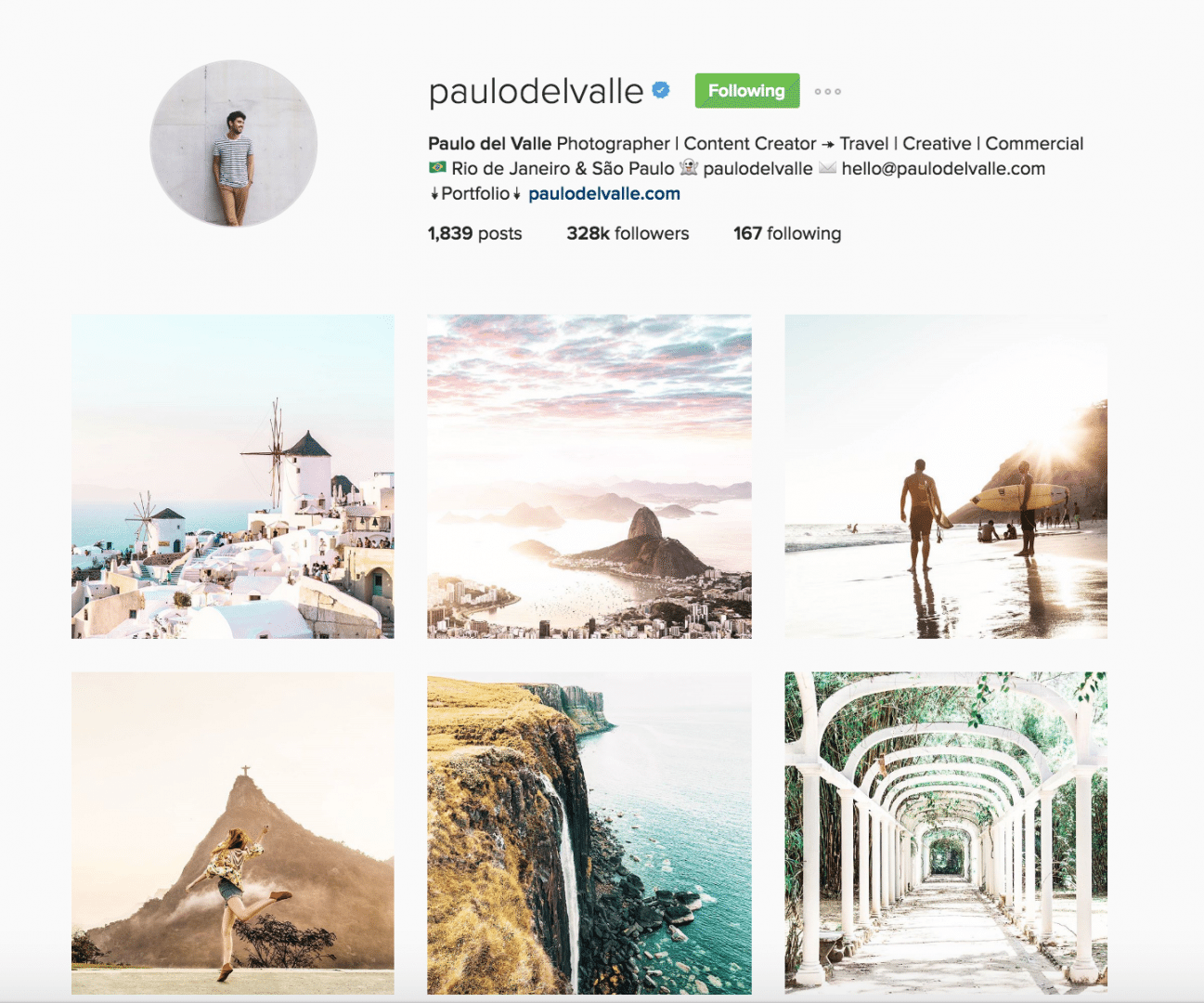
Brazil-based travel photographer Paulo Del Valle can charge as a photographer with or without Instagram influencer marketing. He has a unique content style and brand. He’s not just taking selfies. He’s invested in professional equipment, has a set of skills. It can take him hours to produce a single shot. You could hire Paulo to create content for your platform whether or not you want him to to personally promote your actual product on his platform (which he is also great for). You need content like Paulo’s on your platform.
Paulo is followed as a photographer. Follow Paulo, we like him.
People love to look at and listen to model and actress Caitlin O’Connor. Caitlin is booked for on-camera talent with or without social media platforms. Host of The Chive, Caitlin doesn’t always spend as long as Paulo on taking a photo (often time she does too). She produces both professional photos (with need of a photographer), or takes social photos such as “selfies.” People follow Caitlin because she is sexy and interesting. She’s not just a model, but an on-camera personality.
People follow Caitlin for different reasons than they follow Paulo. We like Caitlin, follow Caitlin.
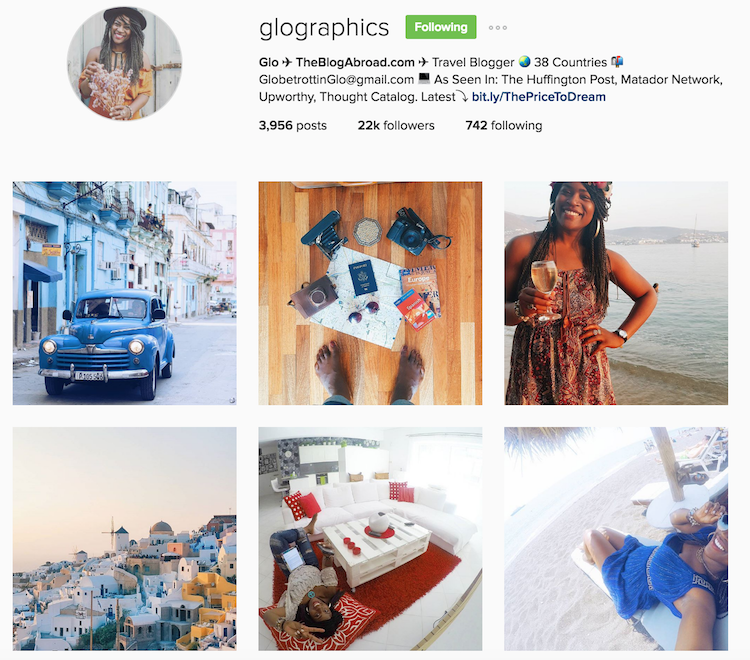
Here’s one of my favorite authors. Gloria is a blogger… particularly, a phenomenal writer (sorry, but no, not all bloggers are actually very good writers — some are followed for doing cool things and having great pictures or videos, and not for doing cool things and writing great content). Glo has a powerful, memorable voice. She overlaps in some ways as a photographer and model with Paulo and Caitlin; but offers share-able blog content in addition to her Instagram. We like Glo, follow Glo.
Not every type of person on Instagram is great behind and in front of the camera. Not every person popular on camera is relate-able to your market. Not every person that is relatable can create photos that will work on your platform.
Many “influencers” have overlapping roles. We’re artist-entrepreneurs. You can work with one person to meet more than one goal, but each role in Section 3 needs to be filled to run a successful influencer marketing campaign.
5. Booking the “Influencer”
Let’s review what you’ve done before asking someone to promote your product:
- Identified who you want to reach and how you will reach them through different online platforms.
- Established a brand that is beautiful and useful to the people you want to reach over and over.
- Identified the team to tell your story.
You’ll need to set a budget for online marketing. Notice I said marketing, not press.
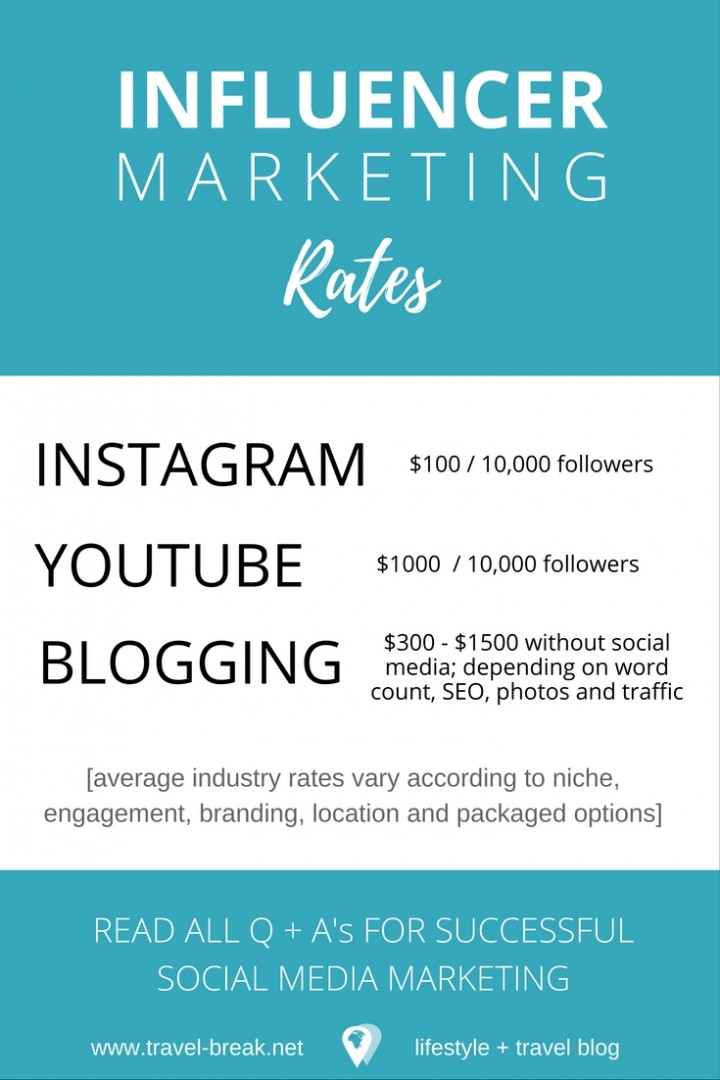 What’s the difference between Advertising and Press?
What’s the difference between Advertising and Press?
If you’ve ever had someone on Gawker, Vice or Jezebel cover your business in a less than flattering way, you’ll understand that earned media is not the same as paid media. Press means that an advertiser doesn’t get to determine the number of social posts an “influencer” posts. Press means that an advertiser doesn’t get to provide feedback to the influencer’s storyline.
Press means that an influencer can review your product or service and tell everyone that they hate it.
On the other hand, as a media publisher and brand ambassador, advertising is when we evaluate your business and say “hey, I actually like your product enough to work with you.” But that’s just it: it’s work and that’s why you pay photographers, writers and personalities to work with you.
What are you paying for when booking an “influencer?”
- Photographer/ Videographer: equipment, insurance, skill set, shooting time, editing time
- Model/ Talent: costume, makeup, prep time, shooting time, grooming
- Community Moderator: time invested in engagement, writing social posts, scheduling and planning social posts, and other digital maintenance
- Creative Director: Driving concepts that fit your brand and/or our own audience
- Management: operations, customer service, emails, analytics, invoices and research etc
Some “influencers” have teams that include assistants, managers, accountants, publicists and more. Others, do all the grunt work themselves. Regardless of how many people go into running their business, someone is getting all of those jobs done.
How much should you be paying for an instagram post?
It depends on the quality of the content you’re purchasing, how the photos will be used and the reach of the content.
If you’re paying a content creator, it’s $100 per 10,000 followers to create + share on their account.
- 50k followers: $500
- 100k followers (about 2k likes per photo): $1,000
- 400k followers: $3.5k – $4.5k
- 1 Million followers (about 30k likes per photo): $12k
If you’re paying a content creator for photos and videos for your business platforms, social media rights only (not using the photos for your website or print advertising rights):
- $100- $250: medium-sized business
- $1,000: enterprise
- $10,00: premium enterprise
My friend shoots content for the Vogue Instagram account. They don’t tag him to give him “credit” because they pay him to produce remarkable content. The rates that Vogue pays isn’t what a startup would pay. You get what you pay for.
If you’re paying for testimony + reach (not professional photos), the average is $1/ 1k followers.
You’ll notice that most lifestyle personalities have lower engagement than photographers on Instagram. Photographers on Instagram have significantly higher engagement and therefore a higher reach.
These are average rates, premium brands pay / charge higher rates.
How much should you be paying for a blog campaign?
This varies greatly on the following variables:
- brand alignment
- market niche
- SEO, creative or both
- original photos, copy only or stock images
- original graphics (or none)
- social media reach
If someone really loves a blogger’s content and has an existing audience to shoot it out to, they might hirer a blogger irrespective of their reach. Like Instagram, bloggers offer a variety services:
- Content creation: writing and photography
- Expert Klout
- On-camera talent
- Web + Social space (advertising space)
If you love someone’s blog content, but they don’t reach a million followers, you can hire them to create smart, beautiful content and share that to a million people through additional advertising.
Alternatively, if you know that someone reaches people that would love your product, but you’re not crazy about their content, you can pair them with a photographer or writer that makes a better fit — or pay for a partnered role as a guest blogger.
If a blogger can offer all four services, expect to pay/charge more.
How much to pay a mid-range blogger:
- Standard 300-500 word blog post (SEO smart w/ graphics), no photos: $300-$750
- Blog Post (SEO smart w/ graphics) + original photography: $750 – $1,500
- Blog Post + photos + social media: starting at $2,500
Personally, I work on a minimum spend.
This means that I can spend less time on managing emails, accounting and operations — and much more time creating art for myself and my audience. By offering packages, I optimize my workload and can provide my clients with a better rate (and better work). Most seven-figure bloggers work on a monthly retainer which actually works in the clients’ favor because the agreement is a safe-range despite how much a blogger continually grows.
How much to pay on Youtube:
Like blogging and Instagram, videos demand a cohesive team. A writer, producer, actors and managers go into creating great content. Not to mention you may have to rent equipment and a place to film. The larger the audience and the more klout the influencer holds, the more value they offer your company brand.
For YouTube, expect to pay $1,000 per 10,000 followers.
- $1,000 for 10,000 followers
- $5,000 for 50,000 followers
- $10,000 for 100,000 followers and so forth
What if I don’t have a budget to hire a photographer, writer or personality?
You have to learn to create great content yourself, or hire a content creator instead of spending your budget on advertising. You should consider your online brand as important as your product. If your product wasn’t amazing, would your advertise it? No. You’d make a better product first, so make a better online brand.
Prioritize your budget on getting the right content on your platform as more important than advertising through “influencers” … or really advertising almost anywhere. With a subscribe-able platform, you can execute media swaps — trade shares with existing parters to grow your audience; and cross-promote with your other advertising and publicity initiatives. You may also want to re-structure your advertising budget and press campaigns to invest in your online influencers.
Social media influencer marketing isn’t right for every business model, but a great online-brand is non-negotiable.
IF influencer marketing is the best way to reach your audience, you should re-direct your advertising budget to focus on influencer marketing.
How does affiliate marketing work with influencer marketing?
Definition of Affiliate Marketing: commission-based influencer marketing for sales or ad views.
Affiliate marketing is not the same as social media marketing. Influencers develop affiliate marketing to drive sales for partners; usually, when they are already using the product themselves and there is an effortless fit into their existing content.
Why doesn’t affiliate marketing work with social media marketing? Content creators only get paid if their audience uses the “influencers” links, so why would we want to drive traffic away from our social media platforms to your social media platforms, where people won’t be using our links and we won’t get paid for our work?
Affiliate marketing works on webpages and e-marketing to direct sales, not to build a social media community.
6. What are the best practices of “influencer” campaigns?
There’s a lot of ethics that go into influencer digital marketing. You don’t get into blogging or photography for the money — but loving your job doesn’t mean it isn’t work. This concept is difficult for some businesses and some people in your audience to understand.
Anytime dolla’ bills gets involved, things get fuzzy. That’s life. Companies want to maximize their return on investment. Some bloggers, photographers and personalities are desperate to meet grueling, unrealistic competitive standards. Before you know it, dishonesty cuts through the system.
Then this happens:
Unfortunately, some instagram accounts pay for followers and pay for “likes” to “boost” their engagement.
People buy followers + RTs on Twitter and as well as on Facebook. You can even buy fake app downloads and fake blog engagement!
It’s a double-edged sword.
Obviously this is problematic:
- You aren’t reaching real people who make purchases, download your app and share through word-of-mouth your amazing product.
Unfortunately, some brands try to take advantage of photographers and models by asking them to work for free.
- If artists can’t make a living off of their work, they’re more likely to lie about their audience or hide the content they create for you.
How do you identify “influencers” with a fake audience?
You can identify someone with a real, engaged audience because of their This is true for Instagram, Facebook and Twitter. You can pay to audit an Instagram account’s followers here. Companies can work with people through referral instead of finding randoms online. It’s a small, intimate industry and most creatives don’t have respect for “influencers” with a fake audience or fake engagement. It’s the responsibility of the photography, blog and entertainment industry to be authentic with both their audience and their partners. There are real people behind those companies that are choosing to invest in our industry over another. Let’s not let them down. We get it, you want to get your money’s worth. You have so many costs, how do you manage your advertising and marketing budget? Pick the right content creators and personalities, and pay them what they’re worth. Businesses such as The Cirqle prey on artists, pocketing the management fee and offering photographers $0 for their work. Personally, I would never work with a company that I don’t align with. The trust from my audience comes first. My job is easy, I’m promoting travel and lifestyle. It’s nearly impossible for me not to like a destination. However, in general, it’s also our responsibility to be authentic in our message and transparent with our audience. In the U.S.A. FTC requires that we disclose with the following words: “Ad,” “in partnership,” or “sponsored.” So keep it real and be upfront about it. There’s nothing wrong with being paid for your work and there’s no reason to hide it. Micro-influencers contribute to your influencer marketing business goals in the following way: when they offer services that stand alone outside of their market reach. In other words, if you want to purchase their photos as photographers or want to book them as a model, it doesn’t matter how big their audience is. These services existed long before social media. You can easily pair a model or photographer with an “influencer” — whether that’s another model or photographer, a feature photos hub or on your own popular accounts. You need great content before you market your content anyways. What does this mean? It means that you still need a publicist to promote your product, but that they should plug your website and social media platforms (if your audience is online). It means you should still market at events, but with a call-to-action with your online community. It means that “influencer” marketing isn’t everything, it’s a part of your story. We’re just here to help you tell it. I hope my intensive guide can offer insight to new and experienced businesses on how to work with “influencers.” I wish for artists to know their worth. I hope my audience can understand the amount of work that goes into my passion and why I must partner with sponsors to run a website. You can read the TravelBreak Story here to further learn about my personal and professional story. While I’ve offered services in brand and marketing long before starting my own blog (and still do), I figured I’d share this as a foundation for the people who cannot afford to hire me. The hustle is real and there is nothing that pains me more than artists or businesses being taken advantage of.
You can audit Twitter followers here.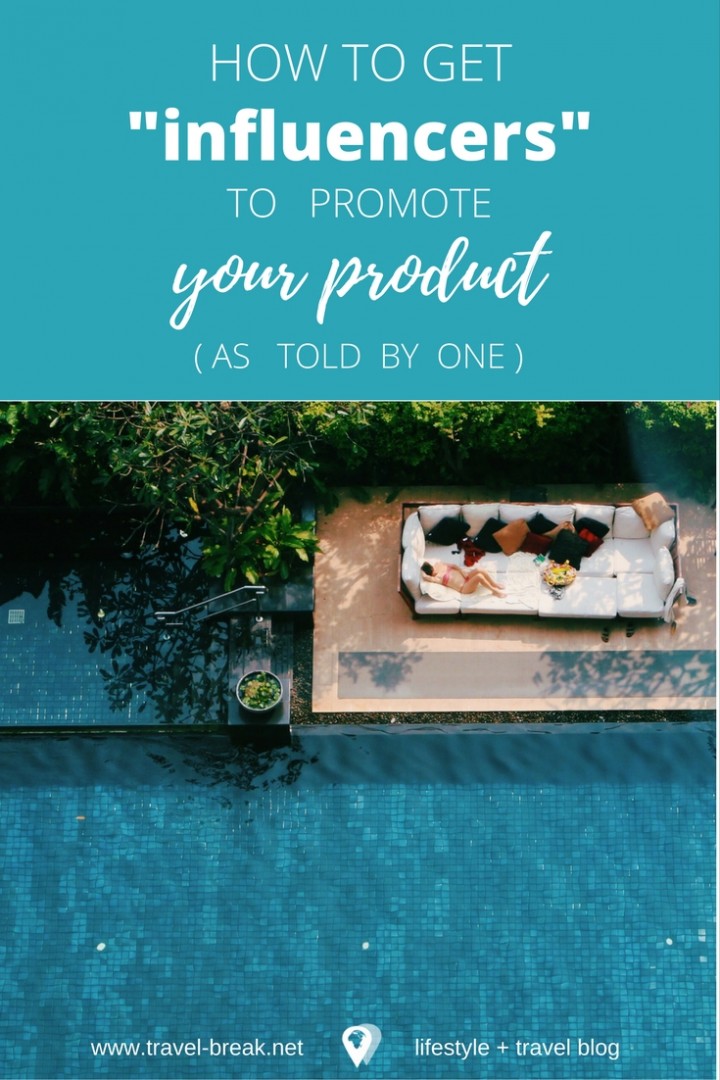 How do you find amazing “influencers” to work with?
How do you find amazing “influencers” to work with?It’s the responsibilities of business to run ethical and fair campaigns.
The worse thing any company can do is go pay a third party agency to ask us to work for free.
It’s the responsibility of both parties to disclose partnerships and ads.
What about micro-influencers?
7. How to get your ROI in “influencer” campaigns:
Special Note from the Author

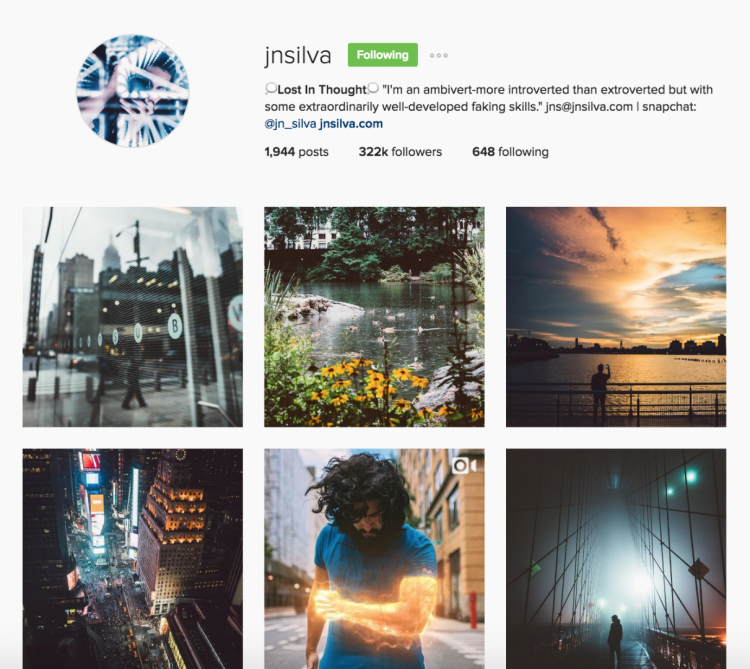
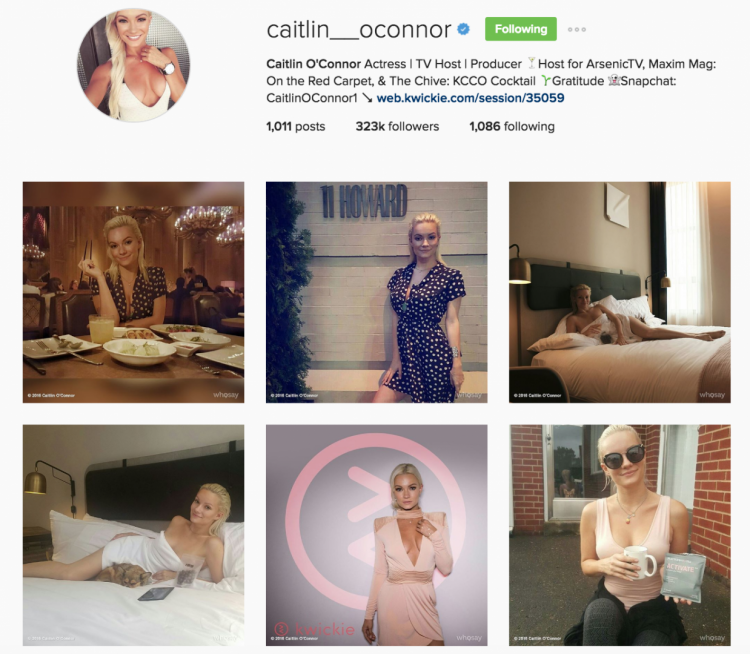




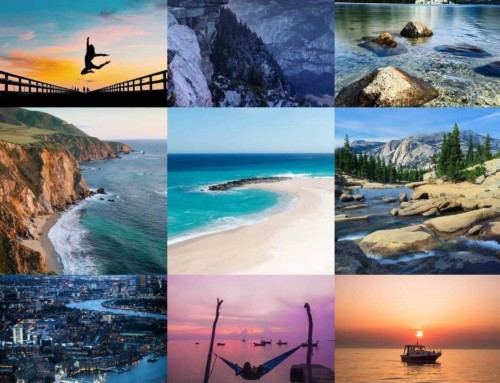
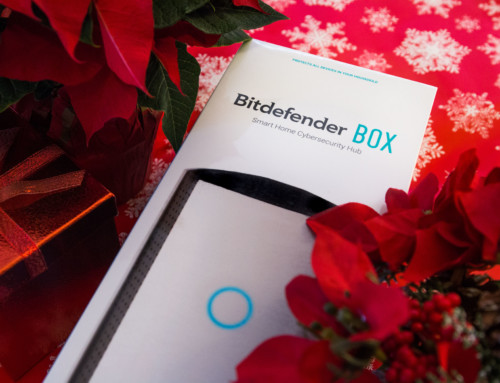

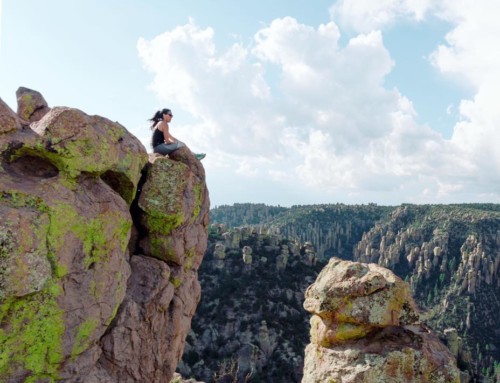
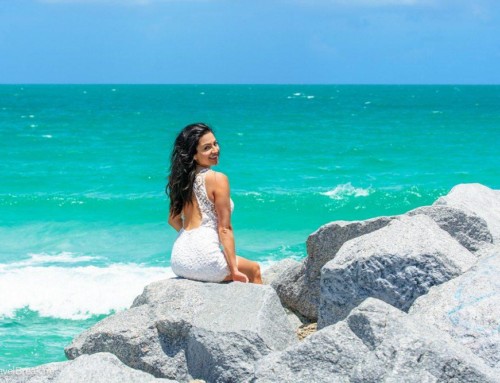
Hey Steph. As someone who does influencer outreach too, I LOVE this guide :) Just a little typo in your paying your content creator. I think you mean $100 per 10,000 followers (if you want 50k followers equal $500).
Keep kicking ass. I’ll be sharing it :)
I saw that last night. Fixed! In case you can’t tell, I didn’t hire a copy editor lol. I depend on my readers for the extra help. Thanks for looking out!
Gosh, Steph. This was an amazing guide. I have often been snubbed by companies who wanted me to create content for them in writing, photos and on social media and asked ME to pay for it myself. Some felt even generous allowing me to write about them for free. I still often have to explain what it is that bloggers do and how that would be worthwile investing campaigns on. There really is a lot of work that goes into creating a real engaged online community, high quality content and seamlessly integrate matching sponsored content, and still companies are reluctatnt to shift their budgets or give social media work to social media savvy workers. I come from a social media background and am often flabbergasted by how often there are new interns or PR people that are teamed up with me and don’t even know the basics of what blogger work entails, such as wifi, photography permits (especially if you hired them to take photos and videos), etc. I hope your guide will spread like wildfire because it blew me away. Also among the bloggosphere we need to be more transparent about the rates and what our efforts are worth if we truly go in professionally. SO thanks, Steph!
Hi Annemarie,
Thank you for reading. I have a marketing background, but reality is that social media marketing is still a new concept. You can have thirty years of marketing experience and not know Snapchat. I still get invited to work for free (alllll the time), but I also work on incredible campaigns with amazing partners. We just have provide more education and offer that transparency that our community needs.
You are absolutely right. Social Media Marketing is a different kind of marketing and sadly not enough companies provide the necessary training to their staff to enable them to learn the tricks of the trade. I did a few courses on them and they were all super basic and still questions kept piling up by a lot of attendees, showing there is still a lot of education necessary. It’s new so that makes sense but the way it is still underappreciated and deemed as just a ‘side strategy’ really hurts business. Better be committed or focus your attention elsewhere. It can be hard as a blogger to try and explain all the things that social media entails AND what influencer marketing provides. And you are right with the transparency. I feel like we bloggers often undermine ourselves the most, trying to seem perfect 24/7, perpetuating the ridiculous notion of our office being on shiny beaches (seriously, the computer screen that works perfect in such an environment needs to be developed) and that we are ‘on’ all the time and love doing everything for free. Looking back at how I started blogging, I shake my head at the ridiculous offers I accepted or was offered (or that some people actually tried to bribe me with literally a handful of sweets). I think it’s also sad that some huge bloggers who started way back scream from their pedestals how small bloggers need to invest a lot of energy, efforts and money into their blogs for the forst couple of years first and without expecting to charge adequately because the experience is lacking. Sure you pay for experience but also service. Even with interns the landscape slowly shifts towards actually compensating work, which is how it should be. I guess the underlying problem is that our current society has entitlement issues and people love to get free content because they have been spoilt to expect that (I know I often unvoluntarily do and have to catch myself).
I read your comment the other day in the business of blogging group and virtually hugged you! The point of discussion was a Huffpost article and there was quite a stir about you. And you stood up for all the newbies as everybody goes through the grind when they start off if they’re serious. While we have our community, many shirk away when you ask for a helping hand. Thank you soooo much for this. This is definitely more than helpful X :)
Aww thank you so much for reading and for the love. The blog and Instagram community has been very helpful and I think we all need each other. I’m happy to help.
This is s great article and has given me a lot to think about it terms of how I market myself as a blogger and influencer going forward. Can I just ask, you mention a mid-range blogger but how do you gauge this? What social reach or following would be a typical number to strive for as a mid-range blogger?
Hi Tam,
Great question. The reason I didn’t put exact numbers on “a mid-range blogger” is because there are so many different services which bloggers provide that it depends on what you’re offering. Some people have a ton of traffic through SEO, while others have very share-able content. The important thing is to know your value and what you are (and are not) offering your client and base your rates off of that.
GLO sent me….I’m in the process of building two (possibly three) online brands and this is INCREDIBLE. I’m so glad I clicked the link. This will be one of those things I pick up and read every so often (along with The Alchemist) to make sure I’m in alignment!
Happy to help. Like I mentioned in the article, there is a lot more than just these 4,500 words that define whether or not your campaign will be successful, but I really feel like if you understand these major concepts that you’re off to a good start. Best of luck with your brands!
Bravo, Stephanie! Well said & a very well written piece. As a long time professional scuba diving photojournalist, the parallels between traditional print media and social influencer marketing are very similar. We are in total agreement that there is nothing more painful than artists or businesses being taken advantage of. Way to go.
Thank you for reading, and cheers to scuba diving!
You’ve summed it up really well, Stephanie and I’ll share your post on Twitter. I agree that brands need to have great content on their own site first before working with influencers, although that’s something that most bloggers can help them with for the right fee. One point that I would add, and I included it on my own site in a short guide on How to Choose the Right Influencer for Your Brand, is to match the type of influencer to your company – a teenage YouTuber may have a huge genuine audience but they may not yet have the buying power to purchase luxury cars, for example
Thanks for reading and thanks for sharing Suzie :)
There is so much more that goes into marketing than these 4,500 words. Understanding your market and a content creators market is so important.
Also came here via Glo :) great article, i’ve been reading it for a few days. I am not far enough to do sponsored content, but this post is very encouraging and inspiring. Few days ago, i got a writing offer, asked for a fair price and they said yes! so happy there are people who value hard work and creativity. Thank you for sharing your knowledge!
Thanks for reading and sorry for catching your comment late!
Thanks for this guide Steph! Influencer marketing is becoming a big thing now. Because it simple works! However, I wanna know which strategy do you think works best? Pitching a few influencer with huge massive following or many bloggers with average number of followers? Thanks a lot!
That’s a really really good question. To be honest, I’m not sure. I also think it depends how you define “big following” and “small following” and what your budget is. For example, if you have $0 for photos and advertising, and some bloggers with under 10,000 followers are willing to send you some photos in exchange for the value of the product, that’s better than nothing. I would consider anyone with 50-150k medium, and anyone with half a million followers to have a great reach. Once you start getting into celebrities with millions of followers, quality over quantity of influencers starts to make a difference. However, I will say that the bigger the influencer, the more likely that other “influential’ people will align with the product or destination. For example, @DoYouTravel went to Morocco — then a bunch of bloggers wanted to go to Morocco. Washington and Oregon really trended for a while on Instagram and everyone went to do it for the gram. You may not get that domino effect with smaller influencers
This is a phenomenal article, Steph!! I came here via your recommendation today in a blogger Facebook group! I’ve been feeling quite down with Instagram of late, and this gave me a boost back in the right direction! It’s so nice to see that I’m not the only one out there who sees the inflated engagement and isn’t a fan! And now in 2017, I feel like it’s worse than ever. Thank you for the reminder that it’s all about CREATING and understanding our worth as brands & creators. It’s not about thousands of likes, it’s about creating effective, high quality content. Amazing reminder :)